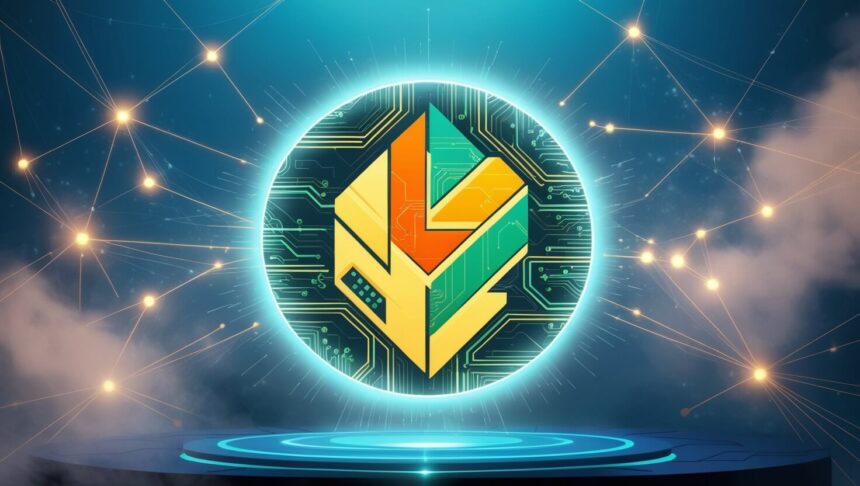In this article, I will discuss the Best Decentralized Social Media networks. Such platforms grant users more control over their data, privacy, and content, unlike the centralized systems that dominate today.
I will analyze multiple platforms features and advantages, and and how they enable user empowerment in social media within the Web3 ecosystem.
Key Point & Best Decentralized social media
| Platform | Key Point |
|---|---|
| Lens Protocol | Web3 social graph where users fully own their profiles and posts, built on Polygon. |
| Farcaster | Decentralized social protocol allowing account portability across different apps. |
| Minds | Open-source network rewarding users with crypto for engagement and promoting free speech. |
| Friend.tech | Social app where users monetize access to their private chat through tokenized “shares.” |
| Bluesky | Decentralized social platform using the AT Protocol, offering algorithm and identity control. |
| Mastodon | Federated network of independent servers allowing users to create and moderate their own communities. |
| Nostr | Lightweight decentralized protocol for social media focused on censorship resistance and privacy. |
| Steemit | Blockchain-based blogging and content platform where users earn rewards in STEEM tokens. |
| DeSo | Blockchain built specifically for scaling decentralized social apps with native on-chain features. |
| Odysee | Video-sharing platform based on the LBRY blockchain, promoting freedom of content without centralized control. |
1. Lens Protocol
The Lens Protocol social graph builds a decentralized social graph on Polygon’s Blockchain. This lets users have content monetization and ownership without a controlling platform.
Each user activity like posting, following, and commenting is done on-chain giving absolute ownership to the user. Developers have the freedom to create social applications on top of Lens which are free of centralized censorships.
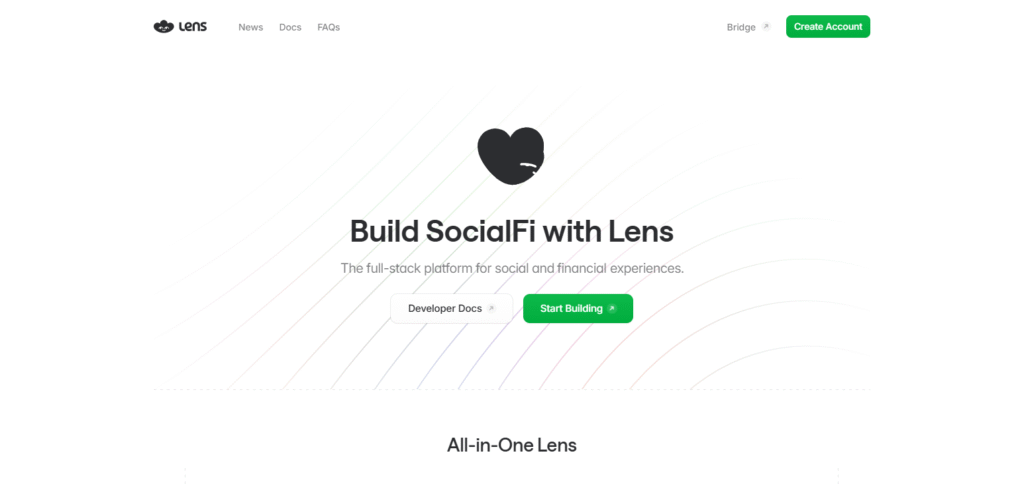
It allows modular updates which means that it can be changed in the future when needed. Focused on protecting user data, privacy, and interoperability.
Lens Protocol provides a seamless social experience for Web3 natives and self-governed users finally enables empowering users in a trully decentralized manner.
Features of Lens Protocol
- Ownership of Profiles: You have complete control of your content and connections on-chain.
- Composability of Content: Applications and innovations can be built on top of previously existing applications with ease.
- Developed on Polygon: Transactions are fast and cheap while being secured by Ethereum.
- Identities Based on NFTs: Profiles being NFT allows for easy portability across applications.
- Modular Framework: Changing the system by adding new modules can be done seamlessly and without disruption.
2. Farcaster
Farcaster as a social protocol grants decentralization and portability of accounts hence users excercising freedom. Users of Farcaster unlike other social neetworks get to shift their followers and identity across apps built in the neetwork.
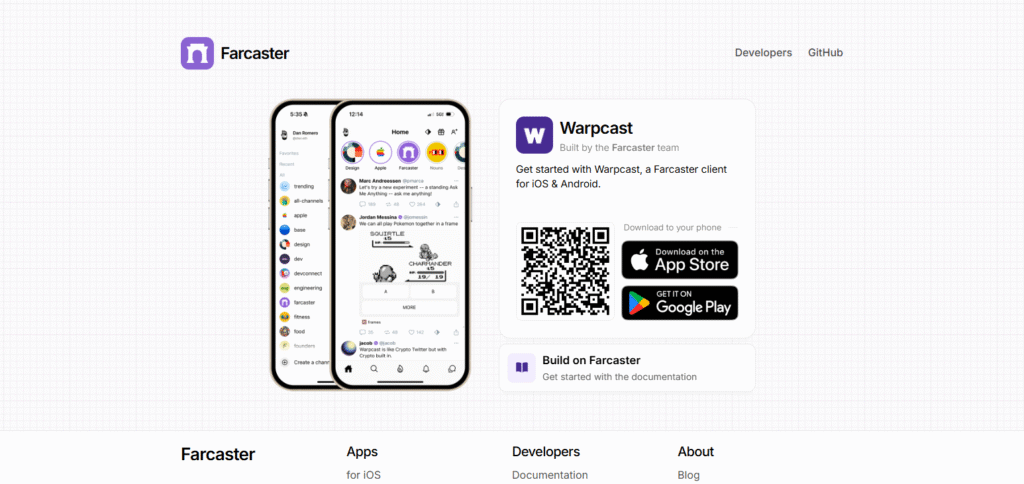
Operating as a mixed model, it has identity ownership through decentralization along with centralized servers for operation. Application developers can create alternative social applications using open-source Farcaster tools which enables Uyghur modern culture.
Censorship, overseering, and control of user is avoided making it truly open. It’s highly popular in crypto communities who focus on user controll with marriage of reduced platform lock-in which makes their attention powerful shift alternative platform in Web3 to Twitter.
Farcaster Features
- Identities that are Decentralized: Your social identity isn’t confined to a single platform alone.
- Multi-App Functionality: Transfer your account and followers to any application built on Farcaster.
- Decentralized Hybrid Hosting: Combining decentralized control with centralized servers for efficiency.
- Open System Permission Protocol: Anyone can develop applications and services off of Farcaster.
- Censorship Minimalization: Choice of moderation and content is controlled by users, fostering free speech.
3. Minds
Minds is an open-source decentralized social media platform where users can earn crypto tokens for engaging and contributing. It stands for free speech, respect for privacy, and anti-censorship.
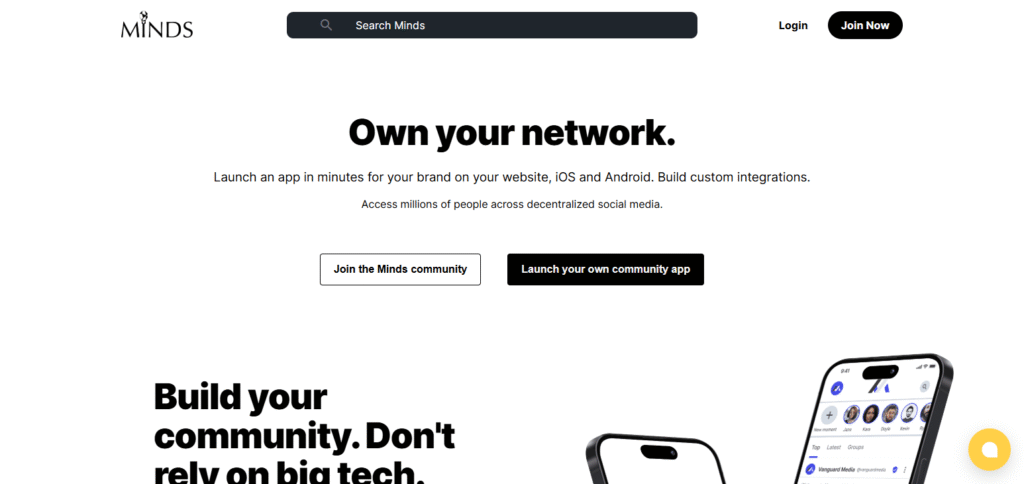
Users can monetize their content and access premium services, as well as promote their posts using tokens. With Minds, creators gain more control over their audiences and data. The platform also supports end-to-end encrypted messaging and open algorithms.
Independent journalists and activists have increasingly adopted the platform alongside users cherishing digital rights. It combines Web2 and Web3 by offering an alternative to conventional moderately controlled social networks.
Minds Features
- Rewards in Crypto: Tokens are rewarded for engagement such as posting, commenting, and sharing content.
- Messaging with Encryption: Conversations are kept private and protected with end-to-end encryption.
- Publicly Accessible Codebase: Code can be made publicly accessible to be reviewed or built on.
- Post Enhancement: Spending tokens boosts the reach of your posts.
- Focus on Privacy: No tracking and algorithmic manipulation that would be deemed invasive.
4. Friend.tech
Friend.tech is a social app on decentralized social app on Base blockchain (an Ethereum Layer 2). Users can tokenize their social presence by selling ‘shares’ to followers, granting them access to private chats and one-on-one interactions.
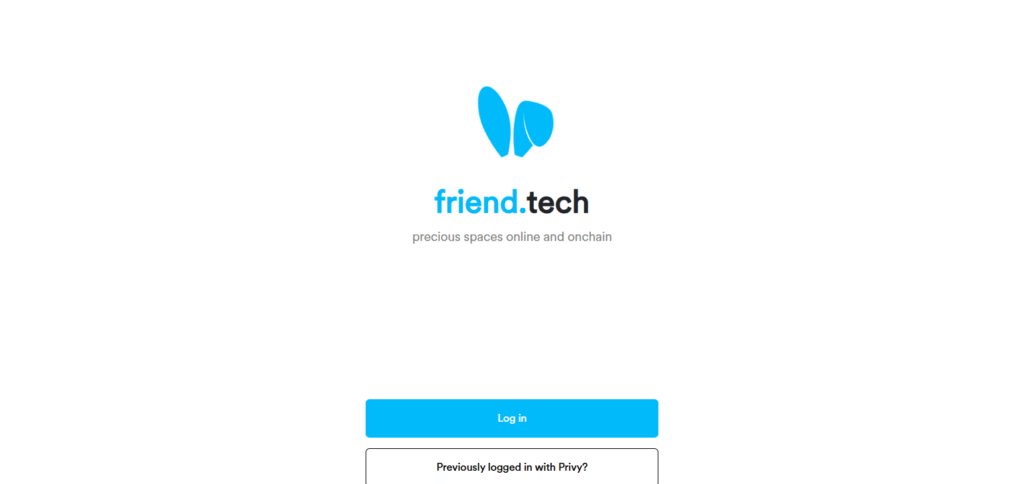
This allows influencers, creators, and community leaders to directly monetize relationships. The platform fuses financial incentives with social engagement, adding an economic layer to online communities.
Friend.tech gained rapid popularity due to its blurring of social networking and Decentralized Finance (DeFi). It’s especially favored by crypto-savvy audiences seeking social activities backed by blockchain rewards.
Feature of friend.tech
- Social Token Access: Fans can purchase “shares” which unlock private chat access.
- Powered by Base Blockchain: Transactions are fast and inexpensive on Ethereum’s Layer 2.
- Creator Monetization: You immediately get ETH as your share value increases.
- Private Exclusives: Unlock private parts of your content or discussions for fans who pay.
- Improved User Interface: The application is simple and mobile-oriented.
5. Bluesky
Bluesky is a social network that operates on a decentralized basis through the work of Twitter’s cofounder Jack Dorsey. It employs the open-source AT Protocol that splits identity, content hosting, and content discovery.

Algorithms, moderation policies, and data are configurable by users. Unlike social media, Bluesky seeks to build a universal social layer for services and applications. It discourages monopolistic control through enabling transparency and portability.
Automatic moderation, user empowerment, and freedom from censorship is also given priority. Users claiming optimal control over their digital footprints consider Bluesky a strong alternative to Twitter.
Feature of Bluesky
- AT Protocol: A decentralized network that allows users to control their identity and algorithm.
- Custom feeds: Allow users to select their content curation algorithm.
- Interoperability: Profiles and content can be used in different applications.
- Open moderation: Communities make their own rules and set moderation policies.
- Data portability: Claim ownership of your identity and follower and move them anytime.
6. Mastodon
Mastodon is a social network that is free, open source, decentralized, and federated. Users join independent servers(also known as instances) that communicate seamlessly with the entire network.

Users of each server have their own moderation rules. Mastodon focuses on user privacy, non-algorithmic timelines, and decentralization. There is no central authority giving users the freedom to express themselves without the scrutiny of corporations.
It’s user interface is not entirely different from that of Twitter which eases first time users to adapt. Its popularity surged as users searching for non-mainstream platforms due to censorship, privacy issues, or corporate dissatisfaction.
Features of Mastodon
- Federated Servers: Allows users to join or create independent communities
- Chronological Feed: A timeline where the content is arranged in the order it was posted with no algorithms.
- Open Source: Available for anyone to host, customize, and modify.
- Content Moderation Control: Create a policy which will govern content that can be allowed in the forum.
- Privacy options: Control who can see your posts, either public or private.
7. Nostr
Developed in November 2022, Nostr is currently gaining popularity amongst privacy-minded individuals. As the name suggests, Nostr is an abbreviation for Notes and Other Stuff Transmitted by Relays.
Nostr is a simple and open protocol for the design of decentralized social networks. It allows for absolute censorship resistance as any individual can post notes or connect with other Nostr users through relay servers.
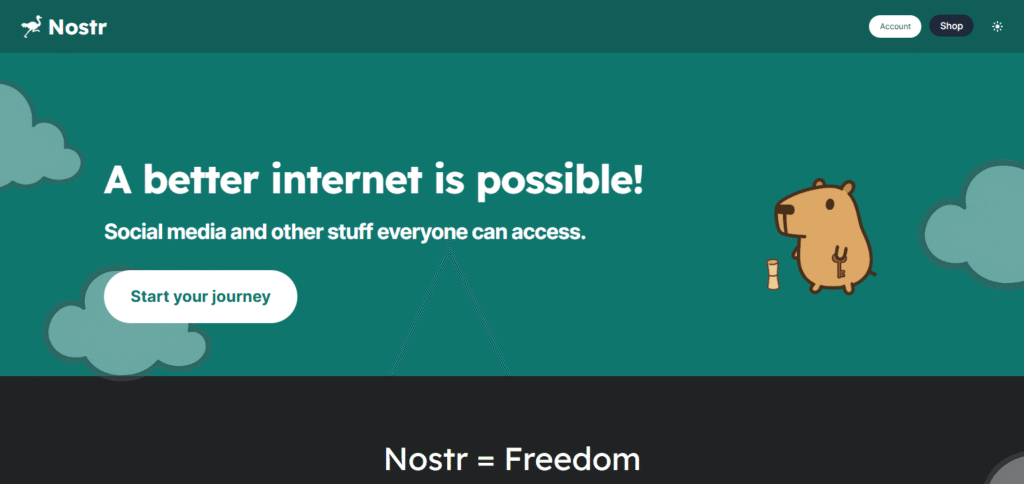
Not only does the user have private control over his account, but can also based his identity on public and private key cryptography. Unlike many other current social media platforms, Nostr does not rely on a single server or monopolistic company.
Its lightweight form, speed and flexibility make it even more appealing to Bitcoin advocates, and defenders of digital freedom. Nostr is one of the most radical moves away from mainstream social media.
Nostr — Features
- Identity and Authentication : No email or phone signup is required, just a public key.
- Censorship Resistance : No single entity controls content publishing.
- Lightweight Procol : Easy to execute, fast, simple, and lightweight.
- Adoption : Rapidly gaining followers from Bitcoin and Web3 communities.
8. Steemit
Steemit is one of the newer additions to the world of blockchain-based social media platforms, allowing users to create and curate content within the platform while getting rewarded with STEEM tokens.
It is also one of the first networks to utilize cryptocurrency directly onto the platform. Votes, comments and post made by the users will be recorded in the Steem Blockchain ensuring its transparency and immutability.
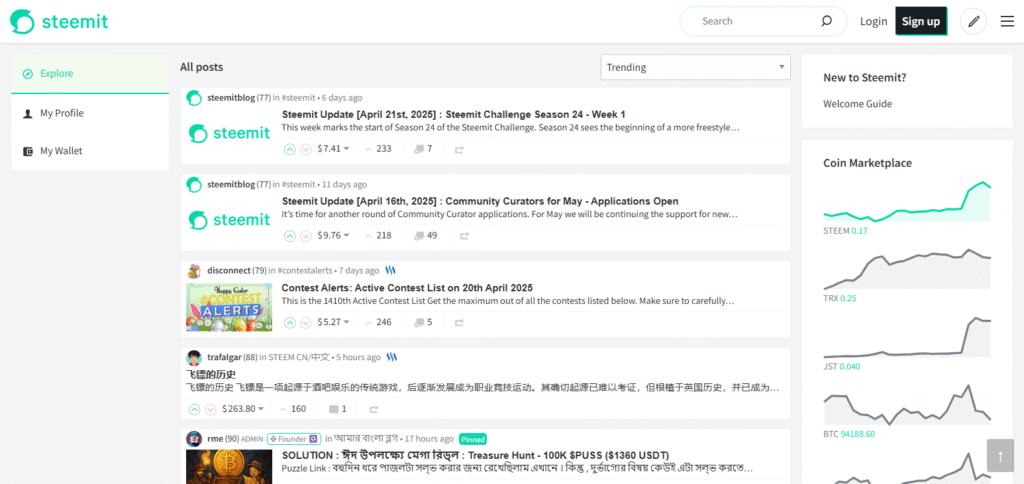
Steemit sets a higher standard for content creation while allowing users to earn passive income through community engagements, thus incentivizing high-quality content. Although it has faced criticism in the past for being overly centralized, the platform still stands as the pioneer project that integrated social networking and blockchain technology into one.
Steemit — Features
- Reward Pool : Dispenses tokens proportionately to the content’s popularity.
- Decentralized Blogging : Concentrates on long-posts and in-depth discussions.
- Content Monetization : Generate STEEM tokens by posting and moderating content.
- Community Governance : Provides an option for Token holders to make changes in the network upgrades.
- Blockchain Transparency : Put every action on a public ledger.
9. DeSo (Decentralized Social)
DeSo is a blockchain tailored for the large scale hosting of social media applications. It incorporates features such as profiles, posts, likes, and NFTs which are all recorded on-chain.
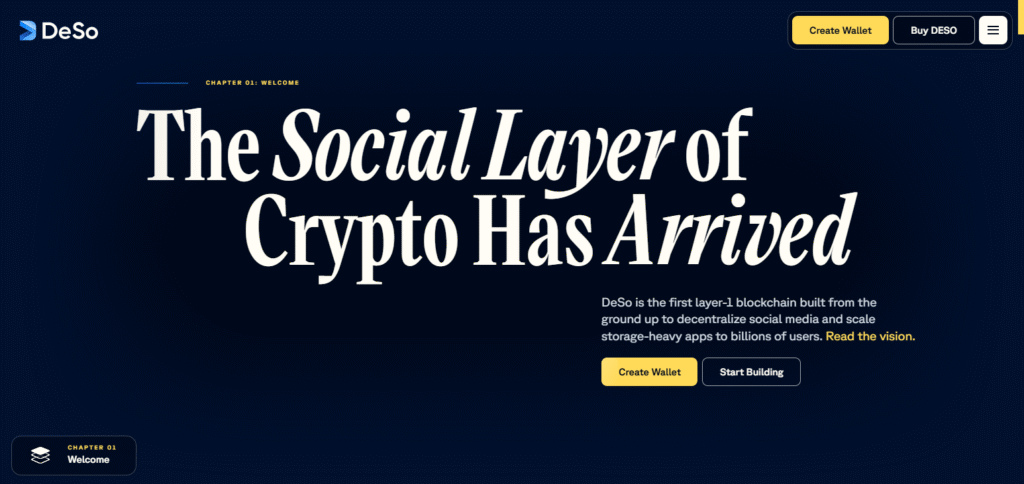
With DeSo, developers can build social applications that circumvent censorship without gas fees or scalability complications typical in multi-purpose blockchains. Diamond, a native application, provides Twitter-like services in a decentralized manner.
DeSo is built in a manner where creators can directly pay creators while users are rendered the ability to control their data. As DeSo is providing infrastructure for a new generation of social applications, it is assumed to become a fundamental base of Web3 social media.
DeSo — Features
- Social Features : Supports social features including Likes, comments, NFTs, and creator coins.
- Monetization Tools : Allows users to tip creators, sell NFTs or purchase creator coins.
- Decentralized Blogging : Concentrates on long-form posts and deep insights.
- Low Fees : Costs is very low compared to Ethereum.
- Open Ecosystem : Other applications including Diamond and Clout are developed on DeSo.
10. Odysee
Odysee is a LBRY blockchain-based decentralized video-sharing platform that enables users to publish videos to an audience without the reliance on traditional hosting services such as YouTube.
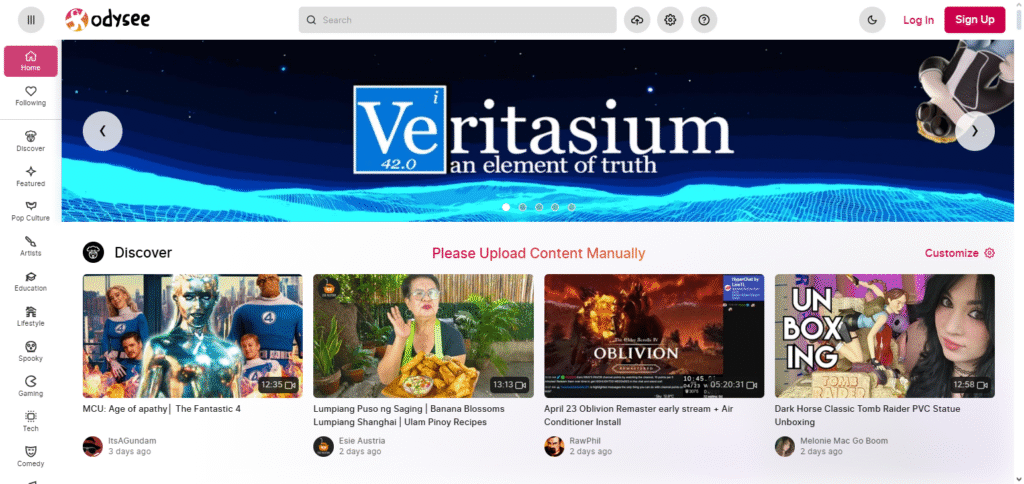
Users retain control of their content and are incentivized with LBRY Credits (LBC) for their content engagement. Odysee targets restricted corporate platforms and promotes free speech and minimal censorship creating an alternative safe haven for creators.
While the platform is underpinned by decentralized technology, it offers an intuitive interface familiar to YouTube users. Given the rising concerns about control and censorship, Odysee has quickly been adopted by independent video creators around the globe.
Odysee Features:
- Video Sharing Powered by Blockchain – Content is stored and tracked using LBRY.
- Monetization of Content – Users receive payments in the form of LBC Tokens for views and other engagements.
- Political Freedom – Very little moderation and censorship.
- User-Friendly Design – Transition from the standard layout of YouTube to this platform is seamless.
- Hosting that is not Centralized – Videos are saved in a peer-to-peer format instead of a singular central server.
Conclusion
To summarize, the future of decentralized social network systems is optimistic regarding regaining control over one’s content, identity, and data. Of the platform options discussed, Lens Protocol and Farcaster are the best choices for user sovereignty, interoperable with other apps, and sturdy decentralized networks.
These platforms allow creators, developers, and users to escape the confines placed by legacy social media networks. At the same time, Minds, Bluesky, and Mastodon also have their own merits with crypto rewards, customizable feeds, and moderated content along with other form of governance tailored to Web3.
In the end, the optimal platform choice varies based on individual objectives such as ownership, privacy, or monetization, Without a doubt, the decentralized social media landscape facilitates creativity, social interaction, and provides fundamental alternatives to existing centralized systems.


